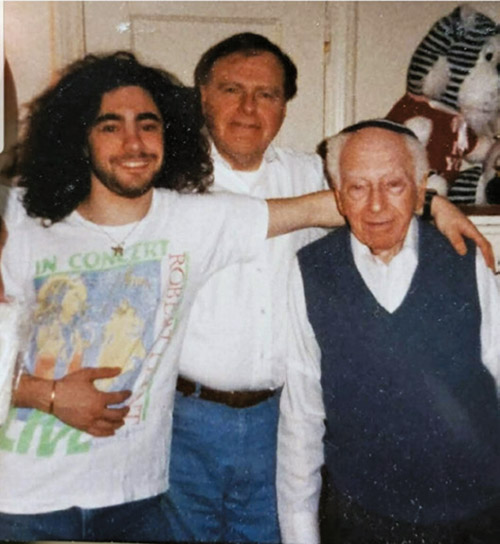


“Every day we’re standing in a time capsule.” RUSH, “Turn the Page”
As human beings living in the information age, we are obsessed with time.
How long will this Zoom call last?
How many minutes of power does my phone still have?
How long will it take me to binge this entire series on Netflix?
We even see time as a game:
Waze is saying that the trip to my child’s school will take 17 minutes; let me see if I can beat that.
Fitness tracking apps like Strava and MapMyRun, and the Peloton bike, have also turned time into a game.
(Good point.)
Even our rabbis were obsessed with time.
(They were?)
Don’t tell me you’ve never passed the “18 minutes” before sunset and started racking your brain to remember what Rav Moshe said about when Shabbat really starts.
(OK, let’s go back to that latitude and longitude story.)
A math teacher would see time along a bar graph, an arrow running along like a speeding train, but I teach history, and we call that a timeline.
(I may have slept through that lesson, but what is the difference?)
We see the same thing, but I call it “longitudinal time.”
(Which one is up and down? I forget)
Latitude.
(How do you remember which is which?)
Your latissimus dorsi, aka your “lats” stabilize your spine and that runs north to south.
(So, what is “longitudinal time”?)
If we study history across a timeline, that longitude. Time moves forward in a straight line.
(But the earth is spinning and the universe is expanding.)
So, we are never really standing still, but what if the “object” does not move?
(How can the object not move? I just told you the planet is moving.)
Ever read Einstein’s special theory of relatively?
(Umm, no.)
If I am riding a train and juggling two balls, I see the balls moving up and down in a latitudinal plane, but the balls are not moving forward.
If you were watching the train pass the station, you would see the balls moving horizontally or as I call it, longitudinally.
(So, which one is true?)
Einstein said both are true, it just depends on your perception.
(What does that have to do with longitude and latitude?)
My great grandfather came to the U.S. in 1881 and in 1916 he received a gold pocket watch as a gift from my grandfather.
Prior to the U.S. involvement in World War I, men did not wear wristwatches, so an 18 karat gold pocket watch was the regal thing to own. In 1920, the watch was passed down to my grandfather when my great-grandfather died from tuberculosis.
In 1968, my grandfather turned 66, and decided to retire to Florida with my grandmother. So, the pocket watch passed from father to son.
When my grandfather died in 1995, my dad passed the watch onto me.
The watch connects me to my father, his father and his father’s father.
My grandfather was 1 year old when the Wright Brothers first took flight. He dropped out of eighth grade to support his family about the same time that World War I erupted in Europe. He watched my father go off to college as the Korean War broke out. He became a grandparent the year before the moon landing and stood next to me at the Wailing Wall in 1981, as I became a bar mitzvah. His whole life was marked by the passage of time.
He was moving longitudinally as those markers stuck in the latitudinal plane waited for him to pass.
The watch is like the ram in the offering of Isaac’s story. The ram didn’t wander into the picture. It was created to be there at that exact moment. Just like the watch.
When I hold its gold case in my hand, I am connected across time to my great-grandfather.
(That’s longitude.)
For over 100 years this one object has connected father to son.
The watch was here before me, and when I’m gone, my son will be in motion for a watch that time stands still.
We come and go, but the watch is always here, constantly ticking, literally and metaphorically.
Its movements move, but it has been in one place.
Like the ball in Einstein’s example, the watch never moved forward because we were the ones in motion.
Somewhere along the way, the watch stopped ticking, and its movements were frozen in time, like baseball legend Ted Williams or the victims in Pompei when Mount Vesuvius erupted in the year 79 A.C.E.
After six months of repair and restoration, I can once again feel it ticking in my hand. I can hear it in my ears. My grandfather is long gone, but in some way, he is still here.
It is a matter of your perception.
It all depends on how you view Einstein’s theory.
Which object is in motion…me or the watch?
David Roher is a USAT certified triathlon and marathon coach. He is a multi-Ironman finisher and veteran special education teacher. He is on Instagram @David Roher140.6.
He can be reached at [email protected]










